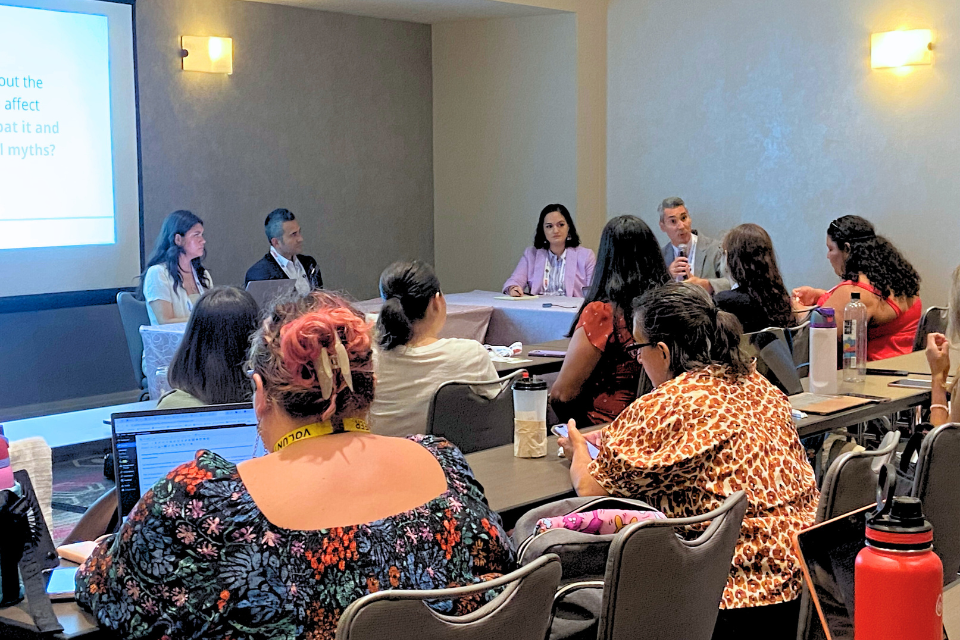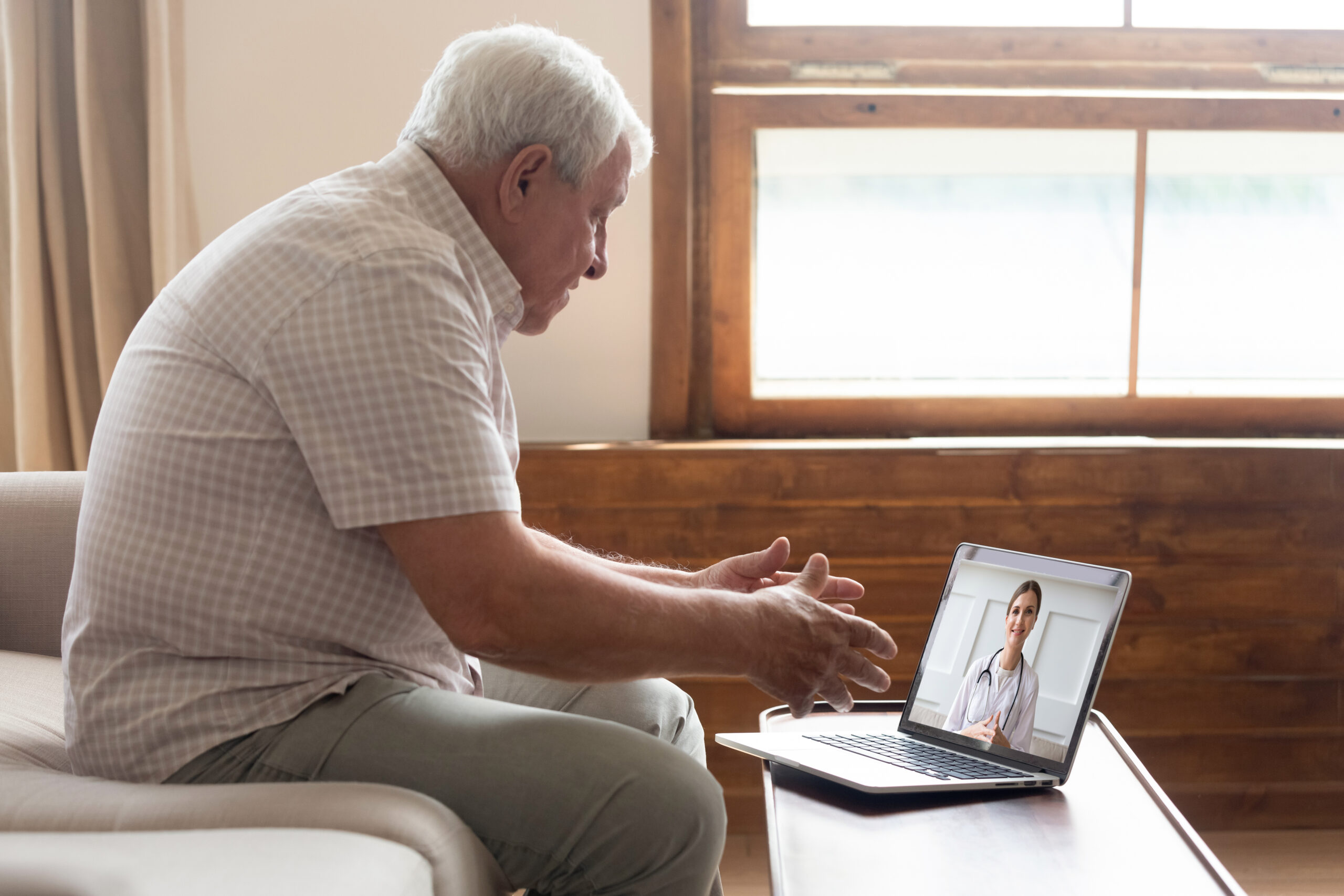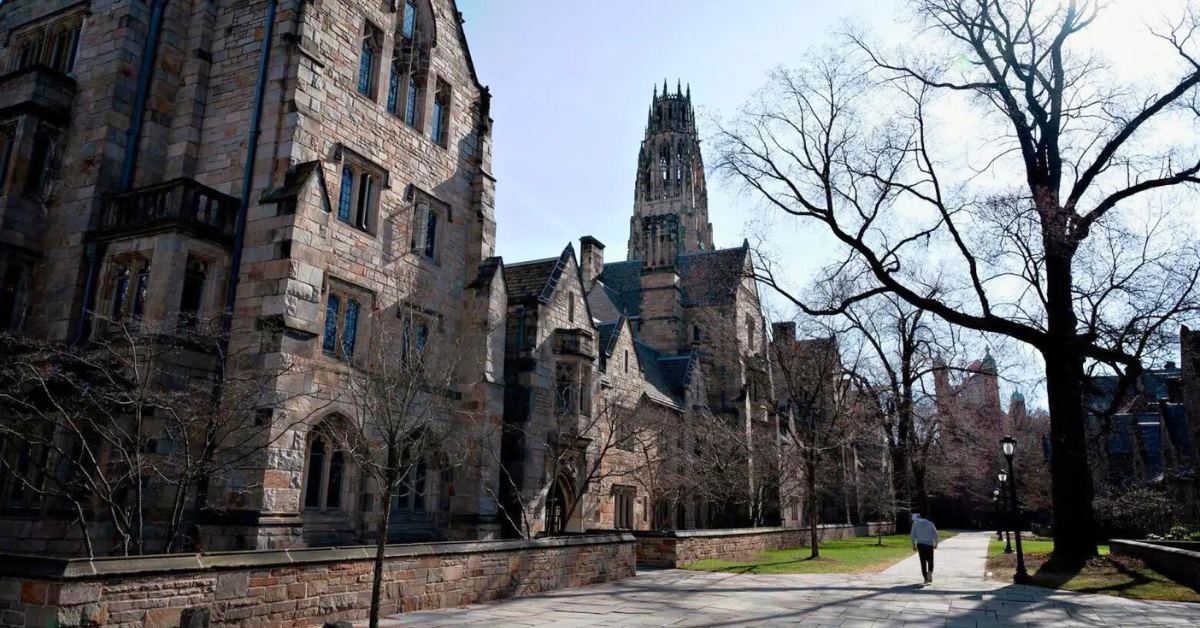By Annikah Darling, CTLatinoNews.com
When breast cancer is detected early, it saves lives. According to the American Cancer Society, Hispanic women who detect breast cancer at an early stage, at the local stage, their survival rate is 96 percent. If the cancer is detected later, in the regional stage, the survival rate drops to 85 percent. And if detected even later, in the distant stage, survival rate plummets to 32 percent. Estela Lopez was lucky to have caught her breast cancer in the first stage, and on January 15, she graduated from treatment and is now in recovery.
The thought of possibly being diagnosed with breast cancer can be frightening. Doctor Andy Salner, Medical Director of the Cancer Center of the Hartford Hospital, says that the idea can be so paralyzing for some women that they simply do not get regular mammograms…Lopez was not one of those women.
Lopez received regular mammograms. One every year. “It’s just what I’ve always done,” says Lopez. Her mother got regular mammograms as well. Regular checkups were the norm for her. In October, however, one routine checkup wasn’t quite so normal.
“I had gone in and got my mammogram,” Lopez recalls, “and when they asked me to come in for a second one, the minute I saw the shadow on the sonogram [the second test was a sonogram,] I knew.”
But she had to wait a week to hear back from the hospital to be absolutely sure. During that time, she went on with her life. She invited her friends from Puerto Rico to stay with her, as they had been having a difficult time since hurricane Maria.
It was a Friday afternoon, Lopez remembers, and she had just finished eating lunch with her friends, they were having a wonderful day, when she got the call… “I didn’t tell them,” recalls Lopez. “We were having such a great time and it was fine. I could handle it…and like I said, I already knew.”
Lopez says that telling people was one of the hardest parts for her. She didn’t want people feeling sorry for her. However, it soon became difficult to withhold the information, and once she began telling people, she was overwhelmed with love and support.
“Finding people to help you through the process is so very important,” advises Lopez.
Dr. Salner agrees with Lopez. “The medical system can sometimes be complicated,” he says. “At the Cancer Center we have navigators who will walk the patients through each step and make sure they get the treatment they need.”
Dr. Salner also considers that the daunting medical system can stand as a hurdle to regular screenings, especially for Hispanic women. This is apparent, Dr. Salner says, in the data that shows Hispanic women tend to present for care with breast cancer at a later stage.
“[The later detection] is a conundrum,” he goes on to explain, “because we are making every effort to catch breast cancer as early as possible.”
As to the reasons Hispanic women generally are diagnosed during later stages, he says: “My guess is that either these women don’t have as good of access to screening services, like mammography, or perhaps they don’t have a primary care physician who will recommend or arrange for them to get screening, I suppose other possibilities might include language barriers that might get in the way of scheduling a mammogram, or work hours that would interfere with getting a mammogram because the mammogram facility is only open during work hours, and maybe women have child care responsibilities that interfere with their ability to get a mammogram. Other possibilities may include trust and credibility issues with medical establishments where they don’t feel they have trust in the establishment to make sure that they are being cared for. Or a belief system, a kind of fatalism, that ‘If it’s gonna happen it’s gonna happen, and there’s nothing I can do about it. So why get a mammogram anyway?’ So that kind of fatalism or belief system could be a huge reason. That and maybe fear: ‘What will that mean for me? What will that mean for my family?’ And they are scared to find out, because if they find out it may be a terrible thing. That kind of fear about breast cancer I think happens in all cultures. So I think those would be the barriers that would result in Latinos having later stages at time of presentation.”
In a document published in 2018 by the American Cancer Society, titled Cancer Facts and Figures for Hispanics/Latinos, Dr. Salner’s statements are confirmed. The research suggests that “Hispanic women are less likely than non-Hispanic whites to receive appropriate and timely breast cancer treatment, although intervention programs that help enhance communication between the surgeon, oncologist, and patient have been shown to reduce disparities.”
Dr. Salner informs that the Cancer Center does strive to enhance communication and to break down any barriers Hispanic women have in getting regular screening and any medical attention they may need.
In Lopez’s case, early detection quite possibly saved her life. At the very least, it made her treatment experience less painful.
“I was in treatment with women that had much later stages breast cancer,” Lopez recalls. “One woman was undergoing chemo and radiation, and the radiation hurt her so much she had to take a break. She was still there when I graduated.”
The later the detection and the farther along the cancer, the harder things get. In Lopez’s case she says early detection was the key to being able to deal with the situation in a state “as good as it could get.” In total, her treatment lasted four weeks. It was no cake walk, but in tackling the problem head on, Lopez beat cancer.
When Lopez graduated from treatment she posted the following on Facebook:
“I graduated today and even got a certificate. I successfully finished 20 sessions of radiation to my left breast to kill any remaining cancer cell that was left after a lumpectomy. I have been debating to post this on Facebook but I am doing it to help anyone out there that has to face this struggle.
“I had several people that helped me. Yvette Melendez found me a great surgeon at Hartford Hospital. Brenda Kelley walked me through all the steps I had to take and the questions I needed to ask to make decisions. She even convinced me of keeping my daughters informed. Perhaps that was the hardest part of the process, letting family and friends know what hat was going on.
“My friend Dulce sent me from PR a care package with coffee, lots of chocolates and many other good things. Joyce sent me from Chicago a meditation book. Daisy gave me earrings and wonderful talcum powder.
“The Cancer Center is a welcoming, caring and professional place. Always felt supported and well taken care. I met a wonderful group of women there who were treated at the same hour. I called them the Breakfast Club and we hugged each other whenever one of us finished the treatment. I also took advantage of free massages and Reiki.
“The lesson here HAVE YOUR MAMMOGRAM.
“My small tumor which had not spread was caught that way. I encountered many angels during this challenge who truly helped me along the way. And of course the love of family and friends … I am truly blessed.”
Dr. Salner informs that the Cancer Center offers free mammograms to women who do not have insurance and they offer assistance to apply for Medicare. The Center also has a mobile mammogram service, where they use state-of-the-art equipment in a mobile environment, bringing mammograms to women in the community who simply can not, for whatever reason, make it to the hospital to get a screening. The Cancer Center has bilingual navigators and call receivers to assist non-English speakers as well.
Lopez says she encountered a number of Spanish speakers throughout the process. “Even the parking attendants spoke Spanish,” she says. “One of the technicians didn’t but she did want a recipe for beans and rice. Everyone was so nice … I gave her the recipe.”
Throughout the experience Lopez tried to maintain a positive perspective and says every time she went into radiation she thought of her favorite painter Frida Kahlo–who painted portraits after a back injury of her nude body. “She took something painful and turned it into something beautiful,” says Lopez.
Because the radiation calls for patients to be vulnerable and nude as well, Lopez turned to the technician one day, and said: “Look, I’m Frida Kahlo!” … “Every time I went in for radiation I thought of her,” says Lopez.
Kahlo became a symbol for Lopez. Her step daughter even sent her a pink tile with a picture of Kahlo in the middle. In many ways Lopez is like Kahlo, by spreading awareness and urging other women to get regular screenings in hopes to save lives, she is turning something painful, into something beautiful.
Visit cancer.org for more information about breast cancer
To schedule a mammogram at the Hartford Hospital Cancer Center call (860) 972-1582 to speak with Dorelly – she is bilingual and she will help to schedule. Or visit their website at hartfordhospital.org



